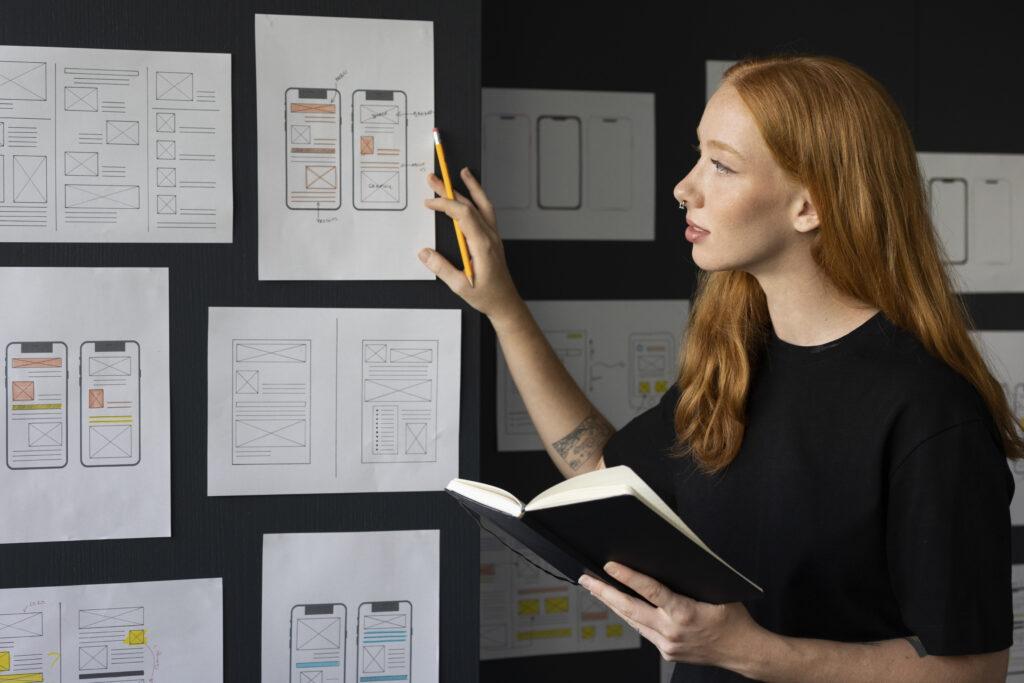
Table of Contents
ToggleIntroduction
User experience (UX) and user interface (UI) are two terms that are often used interchangeably, UX vs UI represent two essential facets of design, with UX emphasizing the holistic user journey and UI focusing on the visual and interactive aspects of a digital product but they actually describe very different things. UX is the overall user experience when interacting with a product or service, while UI is the visual and interactive elements that make up the interface.
What is UX design?
UX design is the process of understanding and optimizing a user’s journey while interacting with a product or service. It encompasses everything from the user’s first impression of the product to their ongoing satisfaction with it. UX designers focus on making products and services easy to use, enjoyable, and efficient.
What is UI design?
UI design is the process of creating the visual and interactive elements of a product or service’s interface. UI designers focus on making the interface visually appealing, easy to navigate, and functional. They consider elements such as typography, color, layout, and iconography to create a user-friendly experience.
Key differences between UX vs UI design
Here is a table that summarizes the key differences between UX and UI design:
| Characteristic | UX design | UI design |
|---|---|---|
| Focus | User experience | User interface |
| Elements considered | User needs, goals, motivations, pain points, tasks, etc. | Visual and interactive elements, such as typography, color, layout, iconography, etc. |
| Goals | To create a product or service that is easy to use, enjoyable, and efficient | To create a visually appealing, easy to navigate, and functional interface |
drive_spreadsheetExport to Sheets
How UX and UI design work together
UX and UI design are two interdependent disciplines. UX designers focus on the user experience, while UI designers focus on the user interface. However, the two disciplines work closely together to create products and services that are both user-friendly and visually appealing.
For example, a UX designer might conduct user research to understand the needs and pain points of users. They might then create wireframes and prototypes to test different design ideas with users. Once the UX design is finalized, the UI designer can begin to create the visual and interactive elements of the interface.
Examples of good UX and UI design
Here are a few examples of good UX and UI design:
- Google Search: Google Search is a great example of a product with excellent UX and UI design. The interface is simple and easy to use, and the search results are highly relevant and accurate.
- iPhone: The iPhone is another example of a product with excellent UX and UI design. The interface is visually appealing and easy to navigate, and the iOS operating system is known for its user-friendliness.
- Amazon: Amazon is a great example of a website with excellent UX and UI design. The website is easy to navigate and find products, and the checkout process is quick and painless.
How to improve UX and UI design
There are a few things you can do to improve UX and UI design:
- Conduct user research: The first step to improving UX and UI design is to understand your users. Conduct user research to learn about their needs, goals, motivations, pain points, and tasks. This information can be used to inform your design decisions and create a product or service that is truly user-friendly.
- Test your designs: Once you have a design, it is important to test it with users to get feedback. This will help you identify any areas where the design can be improved. You can test your designs using a variety of methods, such as user testing, A/B testing, and usability testing.
- Iterate on your designs: UX and UI design are iterative processes. This means that you should continuously test and improve your designs based on user feedback. The more you iterate, the better your designs will become.
Career opportunities in UX vs UI design
UX and UI design are both in-demand fields with many career opportunities available. UX and UI designers can work for a variety of companies, including software companies, web design agencies, and marketing firms.
Here are a few examples of UX and UI design job titles:
- UX designer
- UI designer
- Interaction designer
- Visual designer
- Information architect
- Front-end developer
If you are interested in a career in UX or UI design, there are a few things you can do to prepare:
- Take courses in UX and UI design
- Build a portfolio of your work
- Network with other UX and UI designers
- Attend industry events and conferences
UX and UI design in the future
UX and UI design are constantly evolving as new technologies and trends emerge. Here are a few trends that are shaping the future of UX and UI design:
- Artificial intelligence (AI): AI is being used to create more personalized and user-friendly experiences. For example, AI

